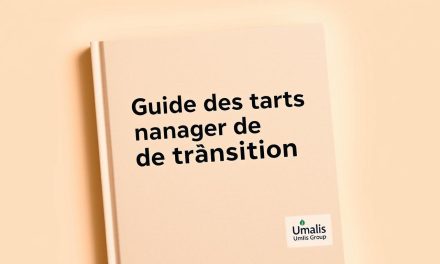White papers remain a top format for B2B marketers who need depth, credibility, and lead generation. Nearly half of B2B buyers will trade contact information to access a high‑value paper, so a well‑crafted report can fuel your pipeline and position your business as a trusted source.
This Buyer’s Guide lays out how to find, compare, and hire the right writer or team to create a white paper that stands out in France and beyond. Expect practical steps on scoping, budgeting, vetting, briefing, design, and promotion.
Modern papers blend narrative and evidence: 1,500–3,000 words of analysis, stats, and graphics built for skimmability and depth. You’ll learn whether to work with a single expert, coordinate multiple writers and designers, or hire a full‑service partner—each choice affects timeline and ROI.
For a deeper look at building content programs and sourcing specialist talent, see our freelance content marketing guide.
Table of Contents
Key Takeaways
- White papers drive qualified leads because buyers often exchange information to access them.
- Typical length is 1,500–3,000 words, rich in data, charts, and actionable insights.
- Decide early: single expert, team of writers, or agency—each affects cost and schedule.
- Align topics with strategic marketing goals to turn content into pipeline and ROI.
- Even without an internal team, follow clear stages: strategy, research, draft, edit, and layout.
- Local talent in France is available, but global experts help for niche or technical subjects.
What Are White Papers and Why They Matter for Today’s B2B Buyers
A white paper is an in-depth educational asset that explores a specific market problem and lays out credible solutions. It combines analysis, clear reasoning, and supporting research so business readers can act without wading through academic jargon.
Compared with ebooks or guides, a white paper favors argument and evidence over design‑first storytelling. Unlike academic research papers, it skips dense methodology in favor of practical findings and actionable conclusions.
How white papers differ from ebooks and research papers
Ebooks and guides tend to be more casual and visual, aimed at broad education. Research papers are formal and methodology-driven. White papers sit between them: analytical, accessible, and focused on decision support.
Where white papers fit in the buyer’s journey
These papers work best in awareness and consideration stages by giving the audience the context and evidence they need before speaking to sales. They can also serve as late‑stage validation when technical evaluators or economic buyers need deeper proof.
- Typical traits: 1,500–3,000 words, clear sections, charts, and skimmable design.
- Topic to outcome: Set the problem, present market context, synthesize research, and recommend next steps without turning the paper into a brochure.
- Audience alignment: Tailor content to technical evaluators, economic buyers, and compliance roles to boost relevance and conversion.
Pair a primary paper with blogs, webinars, and sales one‑pagers to expand reach. A focused topic that answers a real market question will outperform a generic trend roundup every time.
The Business Case: How White Papers Drive Leads, Trust, and Traffic
A high-quality white paper converts detailed insight into tangible business value. Nearly half of buyers will share contact details for a credible, data-rich paper. That willingness makes gated papers a strong tool for demand generation.
Lead generation with gated content
Gated landing pages turn interest into MQLs when the page clearly states the value. Ask for minimal fields, deliver the paper instantly, and trigger a timely follow‑up.
Practical gating strategy: clear value proposition, short form, instant access, and an automated nurture sequence to move downloads toward meetings.
Thought leadership and brand authority
Original analysis and concrete recommendations help your brand stand out. A focused paper positions product teams and the writer as credible sources for technical and executive readers.
SEO and paid campaigns around white papers
Optimize a landing page for targeted queries and link it to related blog posts to capture organic traffic. Use PPC and LinkedIn ads to test creative and audience, then refine cost‑per‑lead and post‑download engagement.
- Downstream benefits: sales get a vetted asset for outreach; nurture sequences reuse paper content; social and email amplify authority.
- KPIs to track: engagement depth, assisted conversions, influenced pipeline, and sales feedback on objections addressed.
- Evergreen value: refresh data and case studies annually to keep search equity and relevance.
Types of White Papers to Consider in Your Strategy
Different paper formats serve distinct goals: agenda‑setting research, practical how‑tos, or quick executive reads. Choose the format that matches your target audience and campaign timeline.
Original research and trends reports
When to use: to set the market agenda or lead a thought leadership push.
Core inputs: survey methodology, sample size, SME interviews, and a clear synthesis of implications and benchmarks.
Problem‑solution and how‑to formats
Use this: to explain root causes, decision criteria, and trade‑offs while staying vendor‑agnostic.
How‑to guides work best for implementation steps and adoption checklists.
Numbered lists and executive briefs
Why they matter: short, focused briefs support rapid production and sales enablement.
Pair an anchor research report with follow‑on briefs for segmented campaigns. Examples: cybersecurity “State of X,” medtech interoperability how‑to, fintech compliance checklist, and manufacturing trends analysis.
Tip: pick topics that map to demand‑gen themes, product roadmap needs, and common sales questions.
Freelance White Paper Writer vs. Agency: Which Is Right for You?
Choosing the right partner is a question of scope, skills, and internal bandwidth. If you already have designers and a demand team, a focused hire can deliver fast, expert writing with flexible terms.
Pros and cons of hiring a freelance white paper writer
Advantages: focused attention, cost efficiency, and quicker turnaround when briefs are tight.
Limitations: design, layout, and promotion often fall on your team. Scaling multiple papers means extra project management.
When a full-service marketing agency makes sense
Agencies bundle strategy, creative, design, and media into a single workflow. They are ideal when you need end-to-end campaign work and coordinated timelines.
Expect account management, multi-stakeholder reviews, and higher up-front costs. That tradeoff can pay off if you lack internal resources or need rapid scale.
Hybrid approach: coordinating multiple freelancers
Assemble a small roster—a specialist writer, a designer, and a demand-gen contractor—managed by a strong internal PM.
- Define roles, milestones, and shared assets up front.
- Use NDAs and clear data-handling rules to reduce risk.
- Start with a pilot project to test fit before expanding scope or budget.
Decision checklist: internal capacity, urgency, complexity, compliance, and promotion needs.
Core Skills to Expect from White Paper Writers
Top writers combine rigorous data work with clear narrative to make complex issues usable. A strong white paper requires specific research skills and practical storytelling to inform buyers in France and beyond.

Research, interviewing, and data fluency
Research means finding and evaluating credible sources, synthesizing analyst reports, and translating technical findings into business language.
Good writers prepare pointed interview questions, draw unique insights from SMEs, and capture quotes that reflect real customer language.
Data fluency includes validating statistics, proposing charts, and collaborating with analysts to ensure factual accuracy.
Structure, storytelling, and editing
Structure maps a clear logic flow: executive summary, section transitions, and strong headers for skimmability.
Storytelling weaves use cases into analysis so the paper stays engaging without losing rigor.
Editing focuses on precision, consistent terminology, and brand voice. Plan for one to two revision rounds and a final proofread.
Quality controls: source documentation, fact‑checking, and legal or product reviews are non‑negotiable steps before publication.
- Work with writers who collaborate smoothly with designers and marketers for clarity and accessibility.
- Ask for a short pilot section to confirm expertise and fit before full engagement.
Scoping the Work: Typical Lengths, Timelines, and Deliverables
Scoping a paper starts with clear goals and a realistic timeline tied to stakeholder reviews. White papers typically run 1,500–3,000 words and need more time than a blog because of research, design, and approvals.
Plan for a five-stage workflow:
- Strategy and outline
- Research and interviews
- Drafting and internal reviews
- Revisions (usually one to two rounds)
- Layout and finalization with design
Research should combine desk work and SME interviews. Allow time for data validation and permissions for third‑party figures.
Use a simple scope template to align expectations: length, audience, objectives, format, and data needs. This reduces scope creep and speeds approvals.
Include visual guidance in the manuscript (tables, chart suggestions, callouts) so the designer can act quickly.
Typical deliverables to hand off:
- Outline
- First draft
- Revised draft
- Final copy with figure list and captions
- References appendix
Assign clear roles: the writer leads narrative and sourcing; product and legal provide approvals; design owns layout; demand teams handle launch.
Build review buffers for compliance and localization, especially for regulated sectors in France. Track effort per stage to improve future estimates and protect timelines with a change‑control process for new data or scope shifts.
Lesson learned: start with a solid outline and stakeholder alignment to avoid major rewrites late in the project.
Budgeting and Pricing for White Paper Writing Services
Setting a realistic budget early helps prevent scope creep and last‑minute rush fees. For a typical white paper, AWAI data suggests a range of $2,000–$10,000 depending on depth and audience. Marketplaces may show lower projects at $400–$600 for simple briefs.
What influences cost:
What influences cost: complexity, data, and industry
- Technical complexity, original research, and data analysis raise fees.
- More SMEs and compliance/legal review add time and expense.
- Design, proofreading, and promotion should be budgeted separately as services.
Setting milestones and revision rounds
Use staged payments tied to approval points. Common milestones: outline approval, first draft, revisions, and final delivery. Most writers include one to two revision rounds; extra rounds are billed separately.
| Tier | Typical Cost | When to Choose |
|---|---|---|
| Marketplace | $400–$800 | Short, low‑data briefs with tight timelines |
| Mid‑range | $2,000–$5,000 | Standard research, SME interviews, basic design |
| Specialist | $6,000–$10,000+ | Original research, industry compliance, enterprise scope |
Tip: negotiate multi‑paper packages or retainers for predictable costs and faster turnaround.
Make the SOW transparent: deliverables, timeline, stakeholder inputs, and acceptance criteria. When the paper aligns to measurable business KPIs, higher investment often pays back via influenced pipeline and reuse across campaigns.
Where to Find Qualified White Paper Writers in France and Beyond
Start your search where professionals gather: targeted marketplaces, industry associations, LinkedIn, and trusted agency referrals. These channels help you find writers who understand sector rules and European compliance.
Sourcing options that work:
- Professional marketplaces with confidentiality controls and NDA templates.
- LinkedIn searches and specialist groups for marketing and B2B writing talent.
- Referrals from agencies and industry associations in France.
How to shortlist candidates: prioritize portfolios that show data‑heavy papers, clear structure, and verified sourcing. Look for samples in your vertical—medtech, fintech, or manufacturing—and evidence of compliance work where relevant.
Check proposals closely: a strong SOW includes milestones, deliverables, timelines, fees, and acceptance criteria. Marketplaces often list recent white paper budgets around $400–$600 and allow fixed or hourly payment models with milestone pre‑payments and refund options.
Protect IP and timelines: require NDAs for proprietary data, confirm ownership clauses, and ask for references. Consider a paid test (an outline or executive summary) to validate fit before committing to a full paper.
Tip: many expert writers collaborate with designers and demand‑gen specialists—ask about preferred partners if you need a managed team.
Selection Criteria: How to Vet White Paper Writers
A practical vetting checklist turns subjective impressions into measurable selection criteria. Use it to compare candidates on domain experience, process maturity, and demonstrable outcomes.
Industry experience and subject-matter expertise
Match the writer’s portfolio to your vertical and regulatory needs. Look for past papers that show topic depth, correct citations, and local market knowledge for France.
Process, communication, and collaboration style
Ask about the end-to-end workflow: strategy, research, draft rounds (expect one to two), and layout handoff. Confirm tools and version control to avoid delays.
Good communicators outline next steps, flag risks early, and coordinate with designers and demand teams.
Quality indicators: samples, references, and results
Prefer samples with strong executive summaries, logical structure, and visuals that clarify information. Request references that speak to lead generation, sales enablement, and asset longevity.
Tip: run a short pilot (an outline or executive summary) to validate expertise and fit before commissioning a full paper.
Briefing Best Practices: Setting Strategy, Audience, and Topics
A focused brief saves time: define the objective, the target audience, and the evidence the writer needs. Clear goals prevent rewrites and keep the project on schedule for France and international reviewers.

Defining objectives, target audience, and pain points
Start with one measurable aim: lead quality, demo requests, or brand lift. Describe the audience profiles—roles, buying stage, and common pain points.
- Provide a briefing template with objectives and how success will be measured.
- List core pain points and sample buyer questions the paper should answer.
- Share internal resources: product notes, case studies, and sales FAQs for faster research.
Aligning topics with product, market, and demand gen
Map topics to product capabilities and real market demand. Define the solution space so content stays educational while remaining relevant to your offerings.
« Decide promotion and repurposing up front—landing pages, email, social, and webinars—so structure supports reuse. »
| Item | Who | When |
|---|---|---|
| Outline approval | Writer & PM | Week 1 |
| SME interviews | Product & Sales | Week 2 |
| Legal review | Compliance | Week 3 |
Research Standards: Sources, SME Interviews, and Data Integrity
Start with a clear narrative, then use evidence to test it. That approach keeps research focused and prevents data overload.
Prioritize top-tier sources: industry trades, business magazines, and analyst firms such as Gartner, Forrester, YouGov, McKinsey, and Bain. Avoid unverified stats without traceable references.
SME interviews capture proprietary data and the language buyers use. Summarize each session in a short note so stakeholders can validate quotes before drafting.
- Keep a research log and citation tracker for transparency and accurate figure captions.
- Cross-validate key numbers, check dates for freshness, and align claims with product facts.
- Seek permissions for third-party graphics and anonymize sensitive examples when needed.
When sources conflict, explain assumptions and favor the most authoritative reference. Maintain a consistent method across papers so benchmarks are comparable year to year.
Rigorous research speeds approvals and builds trust with technical audiences.
| Stage | Action | Output |
|---|---|---|
| Desk review | Collect sources and cite analysts | Research log & source list |
| SME interviews | Extract quotes and proprietary figures | Interview summaries |
| Validation | Cross-check numbers and permissions | Fact‑checked paper & figure captions |
Design, Data Visualization, and Formatting Considerations
A clear layout turns complex data into usable conclusions for both execs and tech teams.
Collaborate early. Writers should involve designers during the outline stage so headings, pull quotes, and figures align with narrative flow. This reduces rework and speeds approvals.
Working with designers for layout and readability
Agree on a visual style guide: heading hierarchy, callout treatments, and figure formatting. Keep the brand voice but favor legibility for mixed audiences.
Charts, graphs, and skimmable structure
Match chart type to the data: trend lines for time series, bars for comparisons, heatmaps for matrices. Label axes and include short captions.
- Accessibility: adequate contrast, alt text, and mobile‑friendly PDFs or web pages.
- Manuscript aids: include a figure list and suggested captions to streamline designer handoff.
- Proofreading: professional editing before publication prevents credibility‑damaging errors.
| Element | Best Practice | Why it matters |
|---|---|---|
| Headings | Consistent hierarchy (H1–H4) | Improves skimmability and SEO |
| Figures | Caption, source, alt text | Supports claims and accessibility |
| PDF vs Web | Designed PDF + optimized web version | Sales use and organic reach/analytics |
Tip: keep dense tables and appendices in the back. Use callouts up front to serve skimmers while preserving depth for detailed readers.
Promotion and Distribution: Getting ROI from Your White Paper
A smart distribution plan moves a paper from passive asset to active pipeline driver. Start with an SEO-optimized landing page that clearly states the value and target audience. Pair that page with segmented email streams and organic social posts tailored to buyer roles in France and the EU.
Landing pages, email, and social promotion
Integrated launch plan: SEO landing page, nurture emails, and paid social campaigns. Test headlines and CTAs for each audience segment and localize messaging for French buyers.
Gating strategies and lead capture
Gating converts interest into leads. Use concise forms and instant access to maximize conversion. Run A/B tests: offer an ungated executive brief alongside a gated full paper to balance reach and lead capture.
Repurposing into blogs, articles, and webinars
Turn key findings into a blog series, industry articles, and a webinar. Create short one‑pagers for sales and extract quoteable snippets for social ads.
Quick checklist: SEO page, email nurture, paid ads, gated form, repurposed blog series, and a webinar follow‑up.
- Use PPC (LinkedIn/search) for message and audience tests; iterate on creative and landing-page conversion rates.
- Track KPIs: conversion rate, cost per lead, influenced opportunities, and pipeline attribution to measure true ROI.
- Coordinate with sales: provide talk tracks and email snippets tied to the paper’s core solutions and findings.
- Align distribution with French industry events and refresh stats quarterly or annually to sustain traffic.
- Consider writing services partners for overflow content production of derivative assets when bandwidth is limited.
For tactical tips on SEO and content promotion that complement this plan, see our guide to boost your freelance career with effective SEO.
freelance whitepapers: Curated Picks by Industry and Use Case
Sector-specific reports speed buyer decisions by pairing clear use cases with actionable data. Below are curated topics and briefing tips to match paper writers to the right subjects and complexity.
Technology, SaaS, and cybersecurity
Suggest annual « State of Cybersecurity » surveys, AI adoption roadmaps, data governance playbooks, and platform consolidation guides.
Healthcare, medtech, and life sciences
Recommend papers on interoperable patient records, clinical data standards, and cost‑of‑care impact analyses for hospital decision-makers.
Finance, fintech, and regulatory topics
Propose PSD2/PSD3 implications, fraud prevention frameworks, and operational resilience checklists for banks and payments firms.
Manufacturing, engineering, and R&D-heavy sectors
Cover Industry 4.0 adoption, predictive maintenance ROI, and materials innovation pathways for R&D leaders.
- Briefing tip: spell out compliance constraints, target data sources (regulators, standards bodies), and required approvals.
- Assess expertise: review past papers and case examples that show measurable outcomes like lead gen or PR traction.
- Match complexity: select a deep‑domain paper writer for technical research and a generalist for executive briefs.
- Cross‑functional input: involve product, legal, and data teams to ensure accuracy in regulated sectors.
Plan derivative content—blogs, newsletters, and presentations—to extend reach and prove ROI.
Common Pitfalls to Avoid with White Paper Writing Services
Skipping a clear brief is the fastest way to invite endless rewrites and missed deadlines. Set outline approval before work begins so everyone knows scope and objectives.
Expect one to two revision rounds for a typical project. More rounds often mean the brief was misaligned.
Don’t skimp on proofreading. Errors in figures, citations, or branding damage credibility. Add a final proofread step and a fact‑check pass.
- Avoid heavy product promotion. Keep the tone educational to protect the paper’s quality and trust.
- Document change requests to control scope creep and cost. Record impacts before approving new tasks.
- Assign a single decision maker and fixed review windows to prevent delays from misaligned stakeholders.
- Plan for design and distribution costs early. Options include agency services that cover the full lifecycle or coordinating separate partners for design and launch.
| Pitfall | Impact | Mitigation |
|---|---|---|
| Vague brief | Excess revisions, missed deadlines | Approve outline; set milestones |
| Weak sourcing | Outdated or incorrect information | Enforce citation standards; fact‑check |
| No proofreading | Credibility loss | Hire a professional proofreader |
| Underestimated promotion | Poor uptake and ROI | Budget for landing pages and enablement |
Tip: Test gating strategies and prepare sales enablement assets with the paper to convert interest into business outcomes.
Conclusion
A strong conclusion ties the planning, research, and promotion of a white paper into clear next steps for your team.
Well‑executed white paper writing turns insight into qualified leads, trust, and usable sales assets across the buying cycle. Pick the engagement model that fits your bandwidth: hire a white paper writer or brief an agency team and pilot the approach to confirm fit.
Lock a clear brief, outline, milestones, and acceptance criteria up front. Budget beyond paper writing for design, proofreading, launch, and repurposing to protect ROI.
Disciplined research and SME interviews make the difference between a credible report and a brochure. Capture permissions and cite sources for lasting value.
Assemble a lightweight playbook for briefing, sourcing, and promotion, and refresh top papers annually. When you pair the right writers and services with measurable KPIs, even lean teams in France can produce standout content that builds pipeline.
Ready to act? Line up a discovery call with a preferred paper writer, set launch goals, and start with a pilot to validate process and outcomes.
FAQ
What is a white paper and why does it matter for B2B buyers?
A white paper is a research-driven, authoritative document that explains a problem and offers evidence-based solutions. It helps B2B buyers evaluate vendors, compare solutions, and build trust. Buyers use white papers to learn industry insights, validate claims, and support procurement decisions.
How does a white paper differ from an ebook or a research paper?
White papers focus on guiding business decisions with actionable analysis and sometimes original data. Ebooks are often broader, marketing-led content for awareness. Academic research papers prioritize methodology and peer review. White papers balance credibility, readability, and commercial relevance.
Where do white papers fit in the buyer’s journey?
They perform best in the consideration and decision stages. At the consideration stage, white papers educate prospects on options and trade-offs. At decision time, they provide the evidence and ROI arguments procurement teams need to choose a vendor.
Can white papers generate leads and improve SEO?
Yes. Gated white papers capture leads via downloadable forms, while ungated versions drive organic traffic when optimized for search. Well-researched papers also fuel paid campaigns and content marketing, improving brand authority and inbound conversions.
What types of white papers should I consider for my marketing strategy?
Consider original research and trend reports to showcase data authority, problem–solution pieces to explain use cases, and executive briefs or numbered lists for busy decision-makers. Match the format to audience preference and campaign goals.
Should I hire a freelance white paper writer or an agency?
A solo writer often delivers cost-efficient, specialist expertise and faster turnaround. An agency provides integrated services—design, distribution, and strategy—but costs more. A hybrid approach pairs writers with designers or marketers for flexibility.
What core skills should a strong white paper writer have?
Look for research ability, interviewing skills for SME input, data fluency, clear structure, storytelling craft, and tight editing. Those skills ensure the paper is credible, persuasive, and easy to scan.
How long does a white paper usually take and what are typical deliverables?
Timelines vary by scope. A short brief may take 2–3 weeks; research-heavy reports can take 6–10 weeks. Deliverables commonly include the draft, final copy, executive summary, citations, and optionally a layout-ready file or design mock.
What influences the cost of white paper writing services?
Cost depends on complexity, depth of research, required data or interviews, industry expertise, and design or distribution needs. High-regulation sectors like finance or healthcare may require extra time and vetting.
How do I find qualified white paper writers in France and internationally?
Use specialized marketplaces, professional networks like LinkedIn, content agencies, and referrals from industry peers. Review portfolios, case studies, and client testimonials to verify sector experience and results.
What criteria should I use to vet writers?
Check industry experience, subject-matter expertise, sample quality, references, and understanding of your audience. Evaluate their process, communication style, and ability to meet milestones and revisions.
How should I brief a writer to get the best result?
Define objectives, target audience, buyer pain points, key messages, and success metrics. Share product details, competitive context, and any existing research. Clear briefs speed up research and align expectations.
What research standards should writers follow?
Good standards include citing reputable sources, documenting interviews with subject-matter experts, validating data, and maintaining transparency about methodology. This preserves credibility and legal compliance.
Do I need a designer for data visualization and layout?
Designers improve readability and engagement. They turn complex data into charts, optimize typography, and create a scannable layout. For executive audiences, visuals increase clarity and shareability.
What are effective promotion and distribution tactics for white papers?
Use targeted landing pages, segmented email campaigns, LinkedIn promotion, and paid search to reach buyers. Consider gating for lead capture, then repurpose content into blog posts, webinars, and social snippets to extend reach.
Which industries benefit most from curated white paper selections?
Technology, SaaS, and cybersecurity; healthcare and life sciences; finance and fintech; and manufacturing and R&D sectors all gain value. Each sector benefits from tailored data, compliance-aware writing, and deep subject knowledge.
What common pitfalls should I avoid with white paper projects?
Avoid vague briefs, skipping SME interviews, weak data sources, poor project timelines, and neglecting promotion. Also prevent overly promotional tone—white papers must educate first and sell second to be credible.





